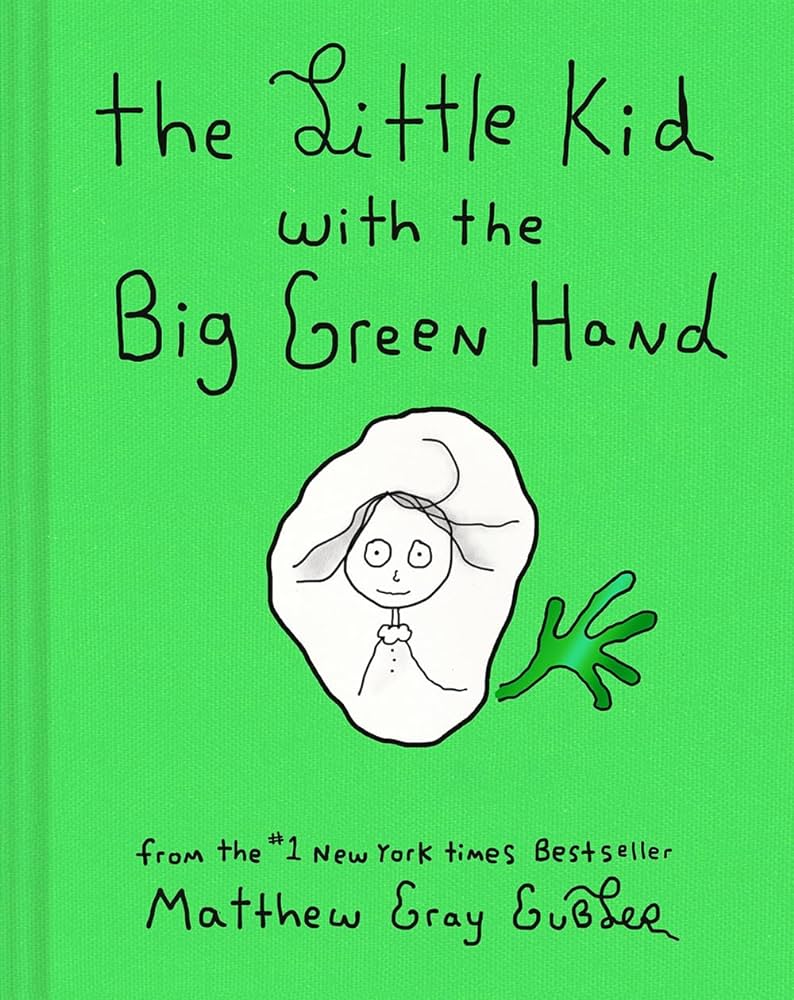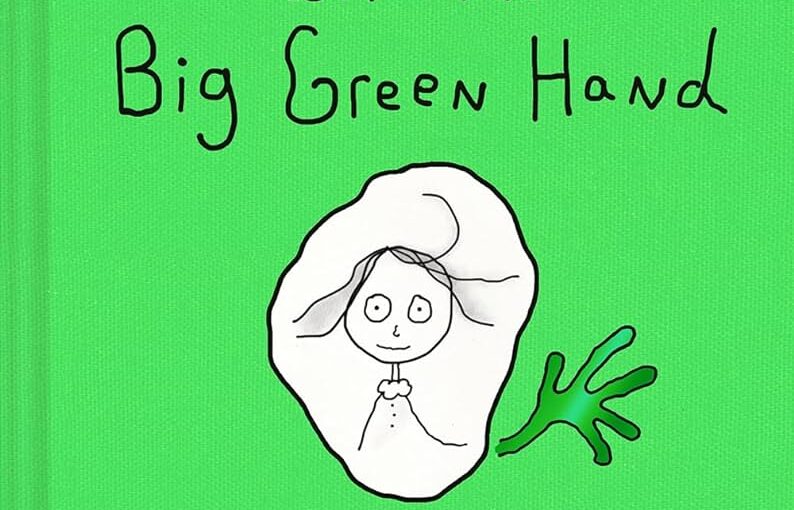https://amzn.to/4ajrPuqThat book is too thick for me, I can’t possibly read it all. That book is very thick, I think that it will be a great reading challenge. The Little Kid with the Big Green Hand has a fuzzy, tactile cover that makes it stand out. It’s a coming-of-age story that parallels something that every child aged five and up can understand. The book’s cover is bright, very curious, and seems like a fun, engaging read that is effortless to engage with. Any child that that picks up The Little Kid with the Big Green Hand will think of one of the five sentences as mentioned above at some point.

It is a thick book and might intimidate some of those younger readers. However, once you open it up those same readers will be immediately disarmed by the playful illustrations and the succinct text. In my case it happened when I didn’t really have the time to read a book, yet I was sucked into its charm when I opened it out of curiosity.
“This is a strange book”, I thought. The illustrations are surreal, simple yet very intelligent, and think in just the same manner that children would rationalize things. I opened it to one page, was entertained by the illustration and thought about what could possibly be happening in the story to have precipitated such an interesting circumstance. So, even though I was quite busy, I went to the first page of The Little Kid with the Big Green Hand to see how it all could’ve started. It was ten minutes later when I got back to the things that I thought I was busy with because I had read the entire book.
Ten minutes is the quick pace at which you’ll read the book. That’s how long it took me the first time I read it, but I went back to it many times, re-read it, paid attention to the precise words that were used and enjoyed the art more. The illustrations are simple, but their timing, perspective and very clever, understated, surreal nature will make kids curious. It’s all of that, plus it’s weird. Kids crave something that’s odd, outside of the box and is able to make their weird thing, the thing that makes them different, seem not so out of the ordinary. I tell my children and the students that I teach that everybody has something and that it’s your job to handle your something to where it’s nothing.
That doesn’t mean you have to remove it, but you’re responsible for dealing with it. If you have a big green hand you don’t lop it off at the wrist, because then your lack of a hand will be your something. If you have a skinny, long haired girl attached to you then that is your something. That is exactly the case of the big green hand, because at a point in The Little Kid with the Big Green Hand the perspective switches from the little kid with the green hand to the hand who has a little kid and realizes that it’s got something undesirable.
It does this in a patient manner that doesn’t answer the question too quickly. The book establishes an odd scenario via a simple, chapter narrative and then upends it all in the third chapter when the green hand starts to communicate with the girl. Chuck is the name of the green hand and the little pink girl as he sees it is different from all of the other hands. Some hands are blessed with being on monsters, forest animals or being a bump on someone’s neck, but he was stuck at the end of arm on a pink blob.
The hand is unable to differentiate that the pink blob is actually a person. It’s just a thing that is inconveniencing itself from being able to do things that it sees as normal or fun. The hand has to do math and is constantly being wrapped up in a scarf as the pink blob tries to hide or obscure its presence. The girl just wants to be a girl, but is weighed down by the big green appendage while her friends don’t have this albatross. This is a lesson book, yeah, but it’s a lesson book that’s told in such a funny, create way that elementary audiences will eat it up with a spoon. They’ll consume the book in a quiet, internal way that will make them think, and allow them to discover the answer at their own pace.
Some audiences will consume the book via story time when they sit down at the carpet. Even those young audiences will be able to follow the plot and understand the big reveal when it happens in the fourth chapter. Don’t be put off or intimidated by the book’s thick size. The Little Kid with the Big Green Hand quickly disarms those readers who might be attracted to its curious nature and playful demeanor. Smart books don’t have to flaunt their intelligence. Arguably, it’s more challenging to not disclose something and have young readers figure out the lesson, moral or ambiguous takeaway for themselves.
That’s where The Little Kid with the Big Green Hand excels. It’s a very smart book in a simple package that young readers will enjoy, laugh at and learn from. Those young readers will also, albeit subconsciously, be more confident readers due to the big-kid presentation of it. There’s a drop down string that’s attached to the book so kids can mark the place where they stop reading. The book’s cover is also that felt material that their parent’s books have too. Those two soft details, in tandem with the book’s illustrations, longer-than-usual format, and art will make this book one that they’ll enjoy and learn from, even if they don’t share the lesson with you.
The Little Kid with the Big Green Hand is from the #1 New York Times Bestselling author, Matthew Gray Gublee and is available from Amulet Books, an imprint of Abrams Books.
There are affiliate links in this post.





 Facebook
Facebook Twitter
Twitter Flickr
Flickr GooglePlus
GooglePlus Youtube
Youtube